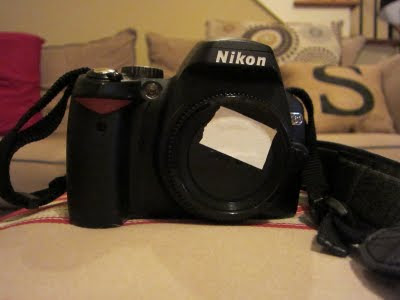Me and the ol' pinhole photography concept go way back (at least to the more experimental years in my distinguished art school education). I loved the endless depth of field and the dreamy quality of the resulting images. We hand built our cameras from pretty sophisticated internet-bought kits (this one), then shot using medium format film, developed the film, and enlarged the prints.
In more recent years, I taught a pinhole photography class to children at a camp. In this case, we also made our own cameras, but this time from up-cycled cardboard packing boxes and duct tape. Our "film" was photo paper which we developed in a college classroom-turned rudimentary darkroom. Here's a couple of examples of this method:


Now, to get to the matter at hand- after all, this is not a blog of my past accomplishments (prestigious as they may be). I read a crazy idea of how to turn my beloved DSLR into a pinhole camera. I was quite skeptical but, I figured, I've got nothing to lose! Basically, I hammered a pushpin through the protective body cap of my camera, taped a crack caused by this invasive procedure, and then used the bulb setting (about a 50 second exposure) to capture my first digital pinhole photos!
Voila! I don't expect you to be impressed, but I'm excited to test this out in daylight- and what better opportunity than my upcoming trip to the beach (tomorrow).




No comments:
Post a Comment